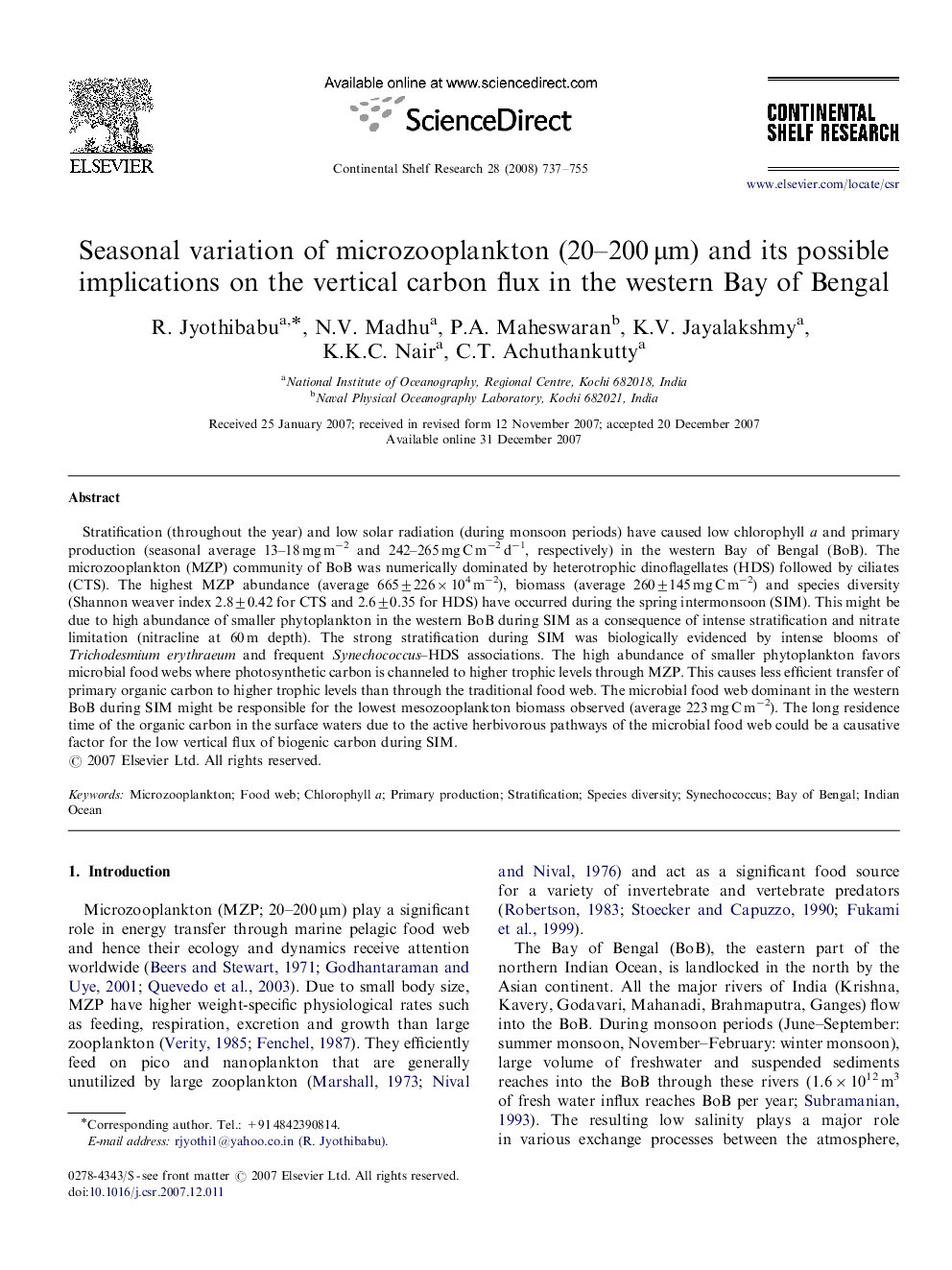| Article ID | Journal | Published Year | Pages | File Type |
|---|---|---|---|---|
| 4533739 | Continental Shelf Research | 2008 | 19 Pages |
Stratification (throughout the year) and low solar radiation (during monsoon periods) have caused low chlorophyll a and primary production (seasonal average 13–18 mg m−2 and 242–265 mg C m−2 d−1, respectively) in the western Bay of Bengal (BoB). The microzooplankton (MZP) community of BoB was numerically dominated by heterotrophic dinoflagellates (HDS) followed by ciliates (CTS). The highest MZP abundance (average 665±226×104 m−2), biomass (average 260±145 mg C m−2) and species diversity (Shannon weaver index 2.8±0.42 for CTS and 2.6±0.35 for HDS) have occurred during the spring intermonsoon (SIM). This might be due to high abundance of smaller phytoplankton in the western BoB during SIM as a consequence of intense stratification and nitrate limitation (nitracline at 60 m depth). The strong stratification during SIM was biologically evidenced by intense blooms of Trichodesmium erythraeum and frequent Synechococcus–HDS associations. The high abundance of smaller phytoplankton favors microbial food webs where photosynthetic carbon is channeled to higher trophic levels through MZP. This causes less efficient transfer of primary organic carbon to higher trophic levels than through the traditional food web. The microbial food web dominant in the western BoB during SIM might be responsible for the lowest mesozooplankton biomass observed (average 223 mg C m−2). The long residence time of the organic carbon in the surface waters due to the active herbivorous pathways of the microbial food web could be a causative factor for the low vertical flux of biogenic carbon during SIM.
